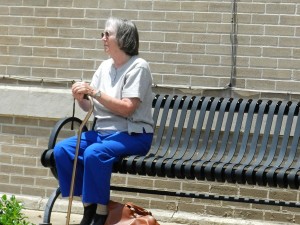 It is perhaps rather ironic that pro se litigants can have more trouble finding affordable help for their criminal defense needs than they might for civil legal needs. This reality exists despite (and perhaps because of) Gideon vs. Wainright (1963), wherein the U.S. Supreme Court held that the criminally accused have a right to legal representation. Gideon’s result was our modern public defender system which provides counsel to indigent criminal defendants. And yet many criminal defendants without means represent themselves, due to their failure to qualify for a public defender. For these self-represented litigants, there exist relatively few self-help resources. (Example: The extensive Help Topics page in the MNCourts website offers no category for criminal defense.) This provative article from the Washington and Lee Law Review examines this reality of economically marginal people slipping through the cracks of the Sixth Amendment right to counsel, and the difficulty in knowing who exactly is indigent. States are on their own to define the “substantial hardship” threshold established by Gideon, and for this they typically rely on the Federal Poverty Guidelines. See MN Stat 611.17 for Minnesota’s own eligibility criteria for a public defender.
It is perhaps rather ironic that pro se litigants can have more trouble finding affordable help for their criminal defense needs than they might for civil legal needs. This reality exists despite (and perhaps because of) Gideon vs. Wainright (1963), wherein the U.S. Supreme Court held that the criminally accused have a right to legal representation. Gideon’s result was our modern public defender system which provides counsel to indigent criminal defendants. And yet many criminal defendants without means represent themselves, due to their failure to qualify for a public defender. For these self-represented litigants, there exist relatively few self-help resources. (Example: The extensive Help Topics page in the MNCourts website offers no category for criminal defense.) This provative article from the Washington and Lee Law Review examines this reality of economically marginal people slipping through the cracks of the Sixth Amendment right to counsel, and the difficulty in knowing who exactly is indigent. States are on their own to define the “substantial hardship” threshold established by Gideon, and for this they typically rely on the Federal Poverty Guidelines. See MN Stat 611.17 for Minnesota’s own eligibility criteria for a public defender.
Despite this dearth of help, one can find the Minnesota Statutes and the Minnesota Rules of Criminal Procedure online. We can also offer some tools at the law library, including treatises on Minnesota criminal law and free access to Westlaw Next. Some information is also available through the Second Judicial District Criminal and Traffic section of the Courts website. There are some local resources for those specifically seeking criminal legal advice. Criminal Defense Services, Inc. exists exclusively to assist Ramsey County residents facing misdemeanor or low-level felony charges. See their website for information on their availability at Ramsey County arraignments for those who do not qualify for public defender representation. Neighborhood Justice Center similarly provides criminal defense services to low-income and indigent people in the East Metro, with focus on communities of color. (Please note that both of the above screen potential clients with income-eligibility guidelines.) And don’t underestimate the thirty-dollar, thirty-minute consultation available through the Ramsey County Bar Association, which might be just enough advice to let you know what your options really are.








